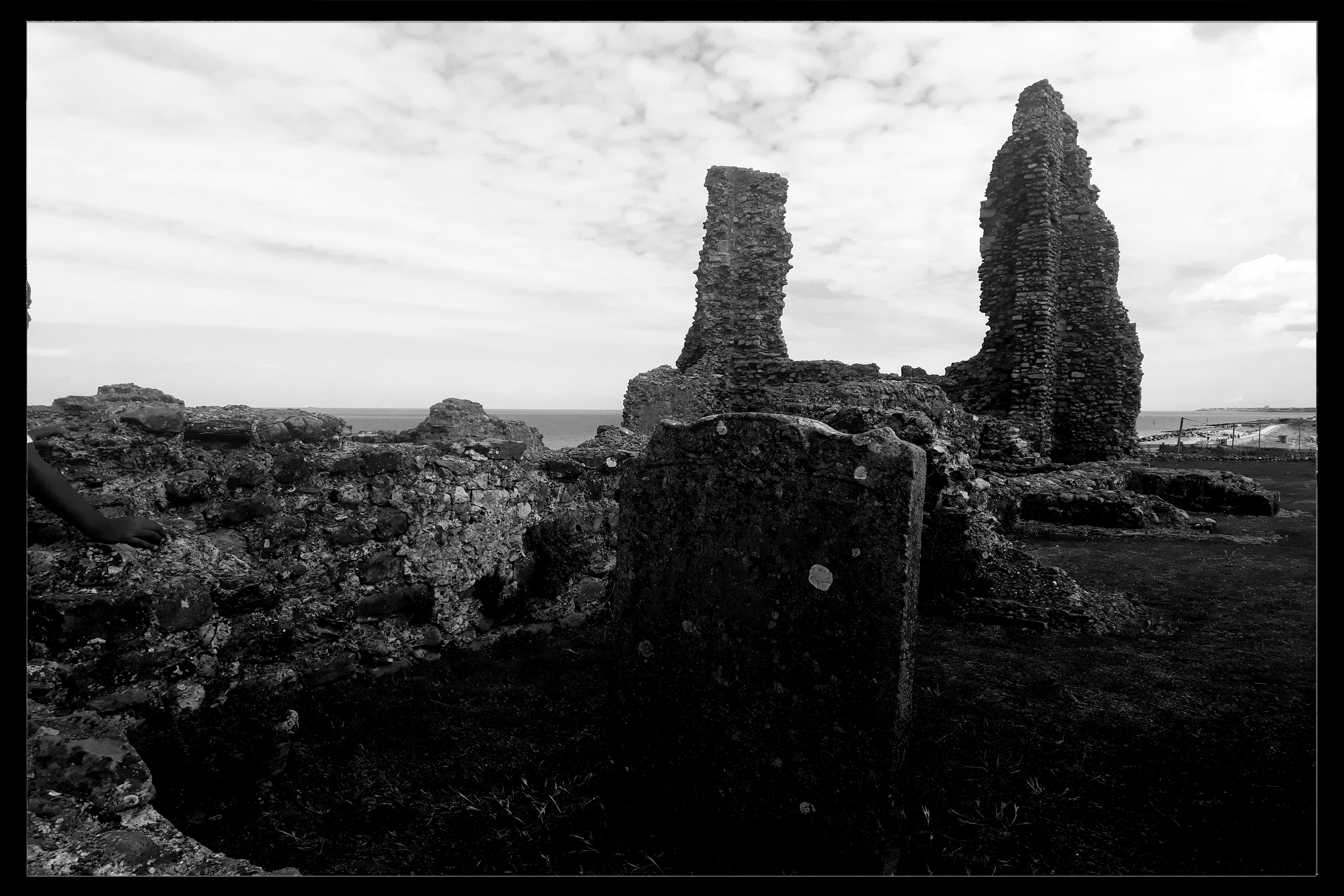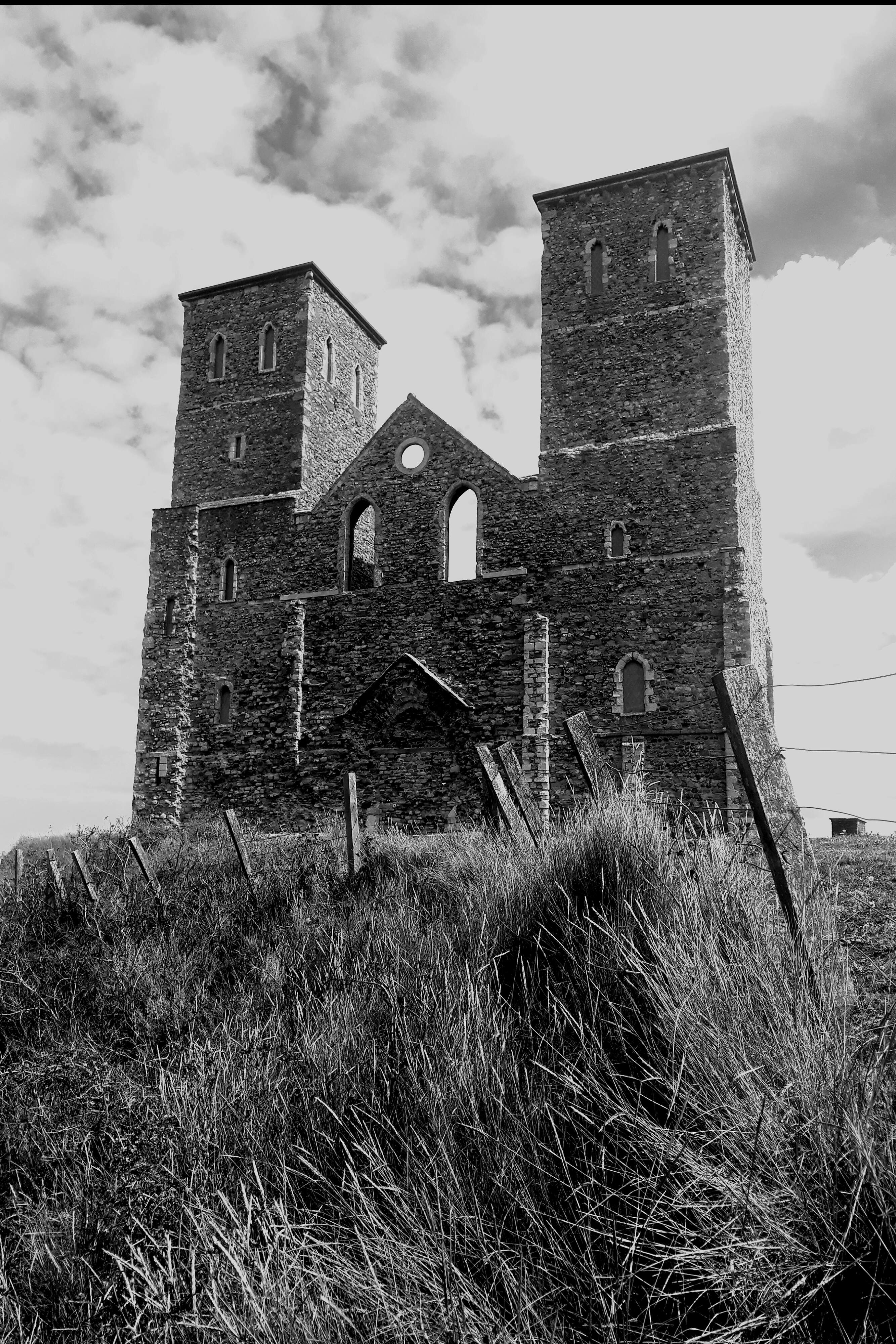Reculver Towers and Roman Fort is mostly a ruin. Still, this site takes your breath away as you approach it. The dominant towers of the twelfth-century former monastic church stand out against the skyline and act as a navigational marker for shipping. Unfortunately, much of the site has been lost to coastal erosion but you can still gain a sense of how grand it must have been from what remains.
Two thousand years ago the geographical layout of the area was hugely different—the Wantsum, a sea channel, cut off the Isle of Thanet from the mainland (this area has since silted up and is now dry land). The Roman Fort once stood on what was a peninsula at the north end of the channel where it joined the Thames estuary.
The Romans conquered England under Claudius in AD 43 thus their armies landed unopposed under Aulus Plautius. There has always been debate as to the location this occurred—Reculver and Richborough (at nearby Sandwich) are locations where fortifications of the Claudian period have been found: given these early findings its plausible the Wantsum channel could be the site where Romans first landed in England.

It’s believed the Roman settlement was build during the 1st and 2nd centuries around a harbour and that the fort was erected during the 3rd century. Almost square, with rounded corners and measuring 180m x 175m it was built on Saxon Shore against Saxon raids.
The religious aspect of the site wasn’t erected until the 5th century, by which time the Romans had abandoned it. The Anglo-Saxon monastery was founded in 669 which made good use of the existing fortifications. The monastery was in use for five centuries.
Another wonderful visit that has prompted a little research into England’s heritage and flared our imagination as to what life might have been like living in a place like this centuries ago.
by Donna Siggers and David Last

